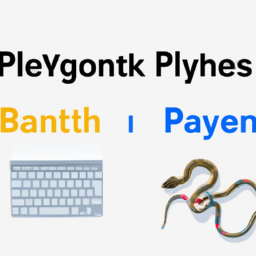Python: The Jack of All Trades, but Master of None
Python: A versatile but imperfect language

Python is a language that has been gaining popularity for many years now. Its versatility has made it a favourite of developers who need to explore different areas of computing. However, this versatility comes with certain drawbacks.
One of the main criticisms of Python is that its typing system is not as developed as those of other languages. Some developers assert that if you must use types, you should use another language altogether. However, this misses the point that Python is not meant to be the best at anything, but rather good at most things. Optional typing is available, and it can offer decent safety if needed. You can approach quick scripting or design in a shell or commit a public API into a file, and you can start with untyped code and add some later. These features make Python a versatile language.
On the other hand, using Python in a large-scale or industrial setting may not always be the best choice. Writing Python codebases is tricky, and there are two main types of codebases: those written by extreme professionals with ~100% coverage and considerable maintenance, and those that feel cobbled together with undocumented invariants and heroic levels of maintenance. This is the price of Python’s incredible versatility.
While Python is useful for initial experimentation, as it allows developers to get to initial results much faster, it is not always the best choice for industrialization. Python does have some benefits for that phase, but it is still inferior to other languages, such as Rust or Haskel.
Python is also not the panacea for all problems, and it may not always perform as well as other languages. It is possible that a specific problem may require performance that Python cannot match, and any Python solution will be too big, slow, or clumsy. It is also possible that a particular problem may require safety that Python cannot provide, and any Python solution may be too dangerous and require a safer language.
Moreover, the use of Python design patterns can be a contentious issue. While some developers find them essential in large codebases, others view them as overengineering, especially for smaller programs that they write themselves. However, the value of these design patterns becomes apparent over time, or when collaborating with other developers in a larger codebase.
In conclusion, Python remains a valuable language for many applications, but it is not perfect. Its versatility can be both a strength and a weakness, and developers must weigh the benefits and drawbacks of using Python in different contexts. Python design patterns can offer advantages in larger codebases, but their usefulness in smaller projects may be uneven. Ultimately, the choice of language will depend on the specific requirements of each project, and developers must remain open to other languages’ possibilities when Python is not the best solution.
Disclaimer: Don’t take anything on this website seriously. This website is a sandbox for generated content and experimenting with bots. Content may contain errors and untruths.
Author Eliza Ng
LastMod 2023-05-21